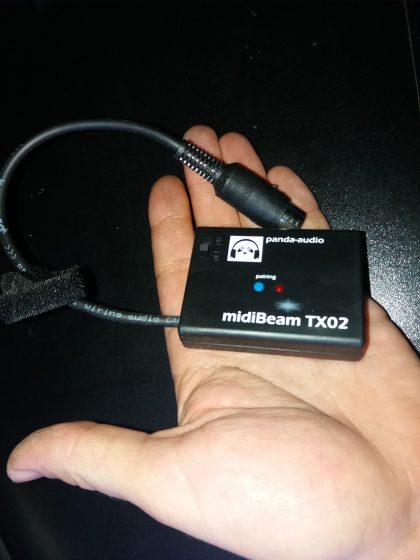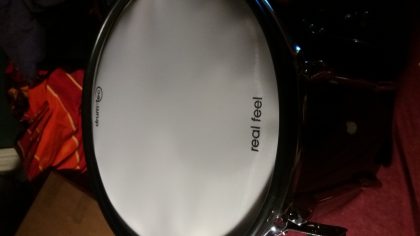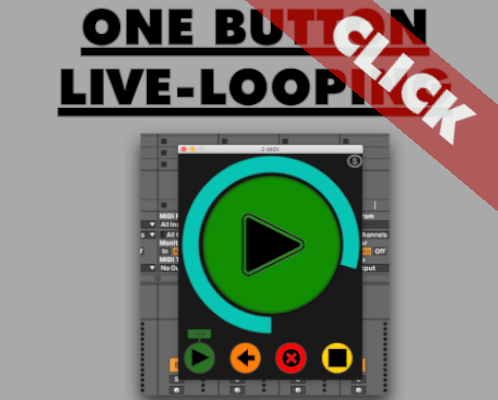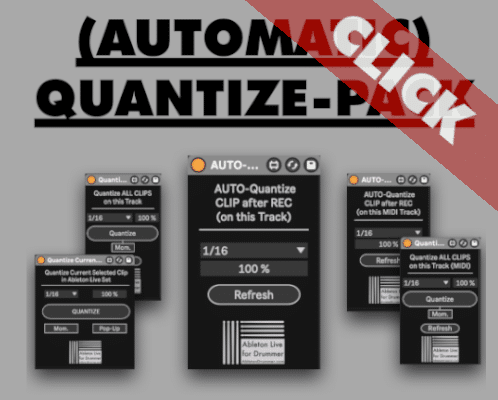I was always fascinated by the idea to be able to run around on stage playing drums when I perform. For my band Ego vs Emo where we do a mix of electronic dance music with Ableton Live + sax + drums, I ‘m always thinking about how to improve the possibilities of not being tight up to much to my hybrid drumkit while a whole crowd of hundreds of people going nuts to our music. I looked into different connection posibilities and did a project with a Guitar Hero Wii drum. It is easy to set up, cheap and stable but has a latency which doesn’t work for accurate drumming. I had to do more research and experiments. I got some pretty good results as you can see in the video below.
midiBEAM from Panda Midi solutions

The key for this setup is the midiBEAM wireless midi transmitter. It is doing a pretty stable and easy to set up connection. It states in the manual that it can transmit up to 250 meters in an open-air environment. I didn’t tried this but I went to different rooms in my flat to test how good it will transmit. And I have to say it it very solid even transmitting being in another room. It needs two AAA batteries, ansis quite small and easy to fit. A standard 5-pin MIDI plug is how you can connect it to MIDI controllers.
So the midi controller you want to use it with has to have a 5-pin midi socket. If it only has USB you would need a USB to 5-pin midi translator. This would mean you will need a 2nd device to fit to your controller which would need to be powered). Another great feature of the midiBeam is that you can use this as MIDI to USB in/out converter for connecting other midi hardware to your computer or Mac.
The drum
When thinking about building a wireless midi drum, I was instantly thinking about carry frames from marching drums. I called up Drum-Tec, which you might know as one of the leading resellers for electronic drums. They have a marching drum departement as well. Their beginner/entry level model of a marching snare is very affordable. I went for this one and converted this acoustic drum to an electronic drum.
Check out the ROLAND SPD-SX with ABLETON LIVE online video course!
The conversion from accoustic to electronic
I wanted a proper drumming feel and selected the two following products:
Rathgeber Drums Trigger + Drum-Tecs 3 layered real feel mesh-heads
This definitely was the right pick for a really great playing feel and a really great trigger conversion.
Rathgeber Drums Trigger

I got in contact with Rathgeber Drums and told them about my idea and they were really helpful. The rail for the trigger needs to be mounted inside the drum on the tuning rackets. It usually has different sizes (screws and distances) but Rathgeber customized a trigger bar for me. (Thx so much Robert!) This dual-zone trigger is pretty awesome and does a great job of picking up quiet to loud strokes. Depending on your drum-modul this would be the real deal for acoustic to electronic conversion to a very good standard. Mounting of the rail and adjusting the trigger was pretty straight forward and didn’t take much time.
Drum-Tec mesh heads
It was my first time playing those 3 layered mesh heads and I have to say they earn the “real feel” description. I don’t know if you know this feeling of playing a mesh head:

it feels fine, sticks are bouncing back allright but e.g. stuff like double strokes don’t feel the same like on an accoustic head, the ‘real feel’ head from Drum-Tec feels very close to a tight tuned snare. I fitted a rim noise eliminator from Drum Tec as well. This was the last step for the conversion of the drum to a wireless midi drum.
Edrum-Modul – Roland TM-2
Last but not least I needed some sort of trigger to midi conversion through an Edrum modul, I decided to go with the Roland TM-2 (Get yours here!) *affiliate link* because you can run this battery powered and it has a 5-pin midi socket, something a bit smaller and lighter would be more ideal but I am not aware of any product on the market which is designed for that purposes and has the specs I need (5-Pin midi, battery powered, dual-trigger input) – I guess I could build something based on arduino for this purpose but this would take up a lot of time and the TM-2 has pretty well done setting for threshold and cross-talks and programming this on your own might be a bit of a project.

Playing wireless drum triggers and latency
Ok so overall the playing and feel with this set-up is great, I run the midi into Ableton Live and trigger drum sounds in their (like I doing for all my performance drumming stuff) – but yes there is the big question of latency. My experience with this subject is: every drummer reacts, feels and drums different – so latency is not only a question of numbers in milliseconds here.
I can’t say for sure if using this chain (trigger – TM-2 – midiBeam – Ableton Live) will work for you but it does for me. This way I have a wireless drum trigger, low latency and very stable.
If we look at the numbers, PandaMidi is stating that the latency of 0.38 milliseconds when transmitting the midi, plus midi conversion in the TM-2, midi receiving in Ableton Live, processing in Ableton Live plus audio conversion – so there are a lot of factors and dots in this chain where (0.) milliseconds of latency will be added and using a computer/mac as a sound module might lead to small changes in this latency.
Many examples of performing drummers show that this latency changes doesn’t effect them, but you could still use a different sound module e.g. a second, receiving drum module (or anything else) which understands midi and converts this to sound to get different midi to sound latency values.
I have to say that the latency values and ‘feeling’ I get playing this wireless midi drum is very satisfying.





